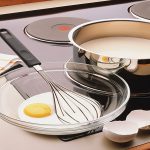
Autism exacts a heavy toll on the families of teens who struggle with the disorder, but the fight to get treatment and services is even harder among minorities who live in poverty, new research suggests. “We must understand that many families parenting teens on the autism spectrum are also struggling to make ends meet while trying to navigate complex systems of care and get the help their children need,” said report author Paul Shattuck. He is program director of the Autism Institute’s Life Outcomes Program at Drexel University in Philadelphia. “We cannot assume that programs developed to help relatively affluent families will work for financially disadvantaged families,” Shattuck said in a university news release. The transition from school to young adulthood can be especially challenging. “Inadequate preparation during the last few years of high school can hinder success on many fronts: physical health and mental health, employment, continued education, friendships and integration into community life,” Shattuck said. The report found that black teens with autism are more likely than other teens with autism to have difficulties in several areas, including communication, self-care, adaptive behaviors and independently getting places outside of the home. “Students do not always receive transition planning, or sometimes it begins too late in high school to allow for adequate preparation,” Shattuck explained. “Community-based help is not always available after high school and… read on >
















